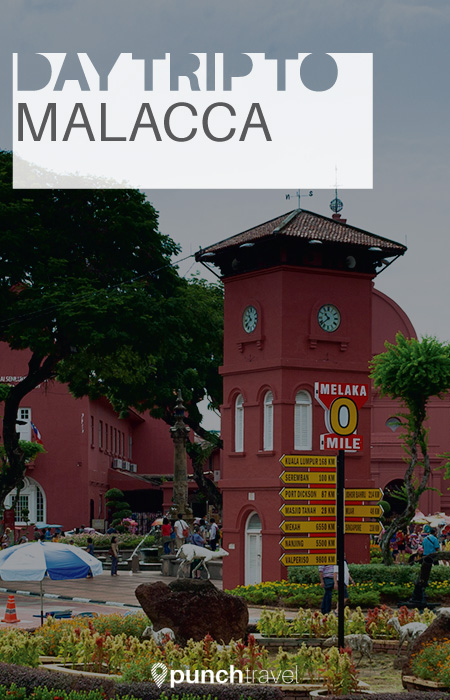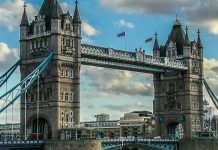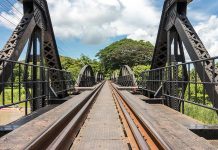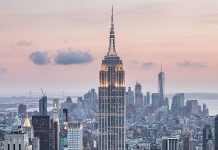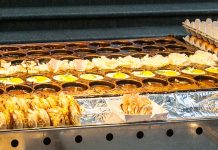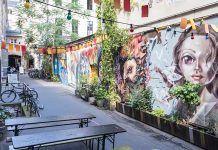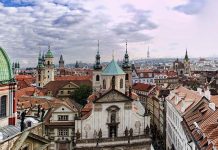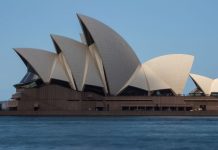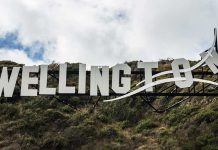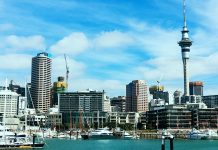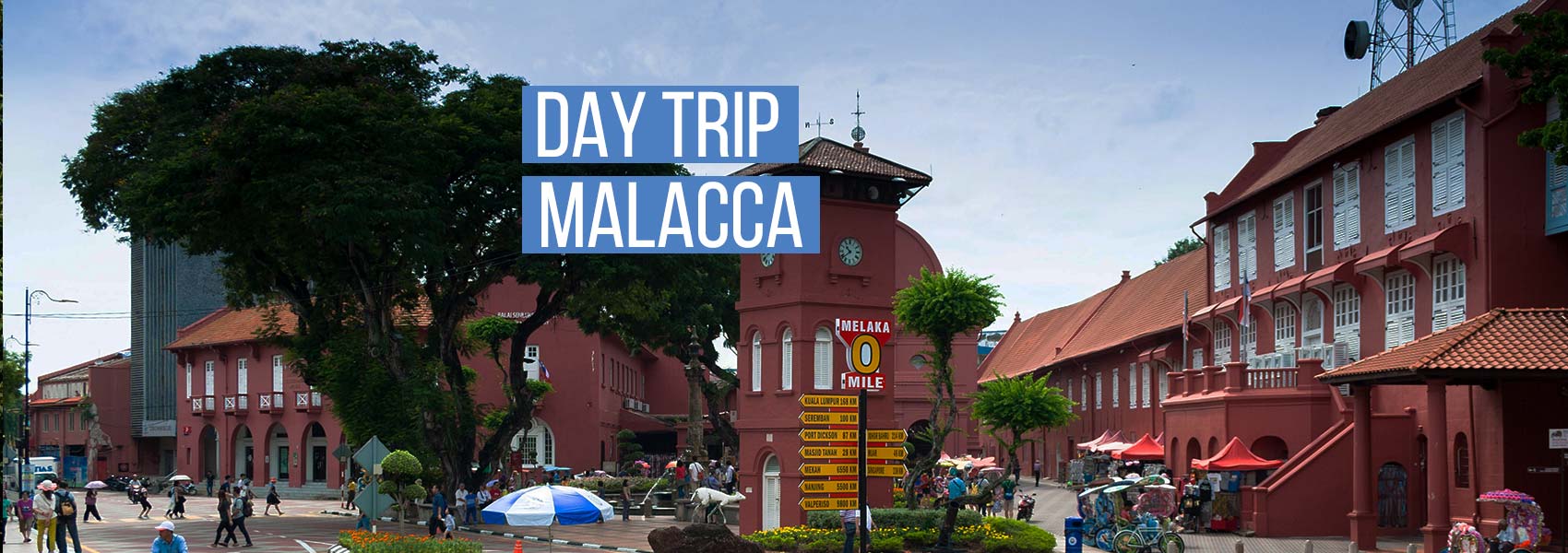Malacca – sounds to me like what you get when you mix Baraka from Mortal Kombat with Mufasa from the Lion King.
No? Just me?
All kidding aside, Malacca, spelled Melaka in Malay, shares the honor of being a UNESCO World Heritage Site, along with George Town in Penang.
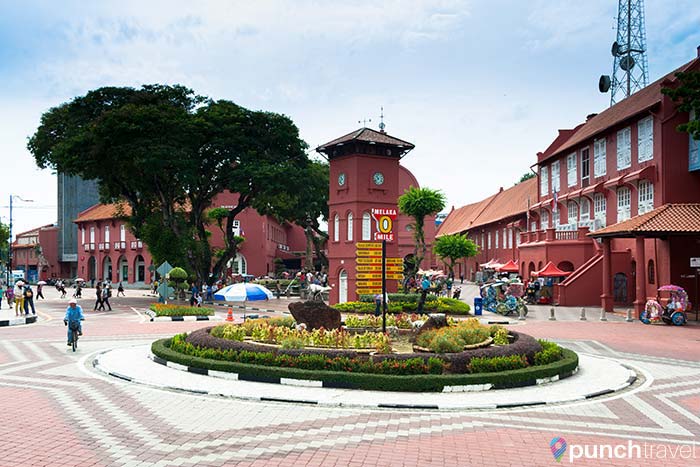
Malacca is the oldest city in the Straits of Malacca, the stretch of water between the Malay Peninsula and Sumatra. Throughout the city’s history, it has passed hands between the Portuguese, Dutch and British. Each of these nations in turn had a significant influence on the culture, architecture and development of Malacca.
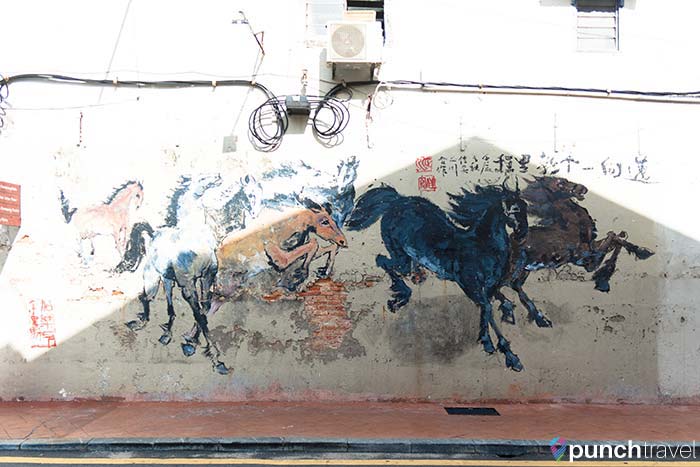
It is only about 2 hours south of the city of Kuala Lumpur, and if your travel plans allow it, a day trip to Malacca is well worth it.
Getting to Malacca
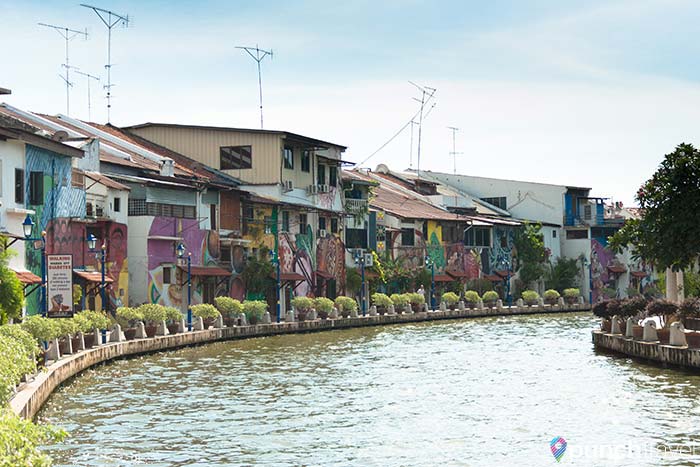
Several bus companies operate trips from Kuala Lumpur to Malacca, with most leaving from Bandar Tasik Selatan station.
From Putra, we took the 6:40am KL Komuter train directly to the station, a 30 minute ride. From the train station, we crossed the overpass into the main bus terminal. In the lobby next to the Information Counter are a row of counters where the bus companies sell tickets from.
Metrobus Express operates a direct bus to Malacca every hour for 10 RM. Other companies like Delima or Transnasional also offer direct routes, but may be slightly more expensive.
The bus ride takes about 2 hours from Kuala Lumpur to Melaka Sentral, the main bus depot in Malacca. From there, we took local bus #17 to the city center.
What to see in Malacca
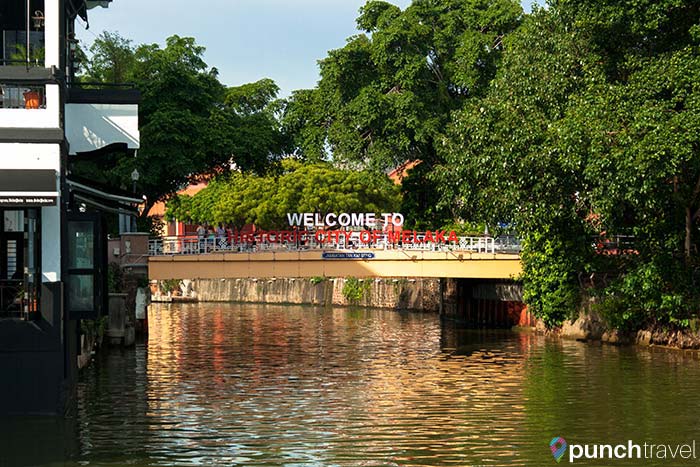
The Melaka River winds its way through the city, and is why Malacca became an important port during the Malacca Sultanate in the 15th and 16th centuries. It soon caught the attention of the Portuguese who captured the port city in 1511, and later the Dutch in 1641. The remnants of the Portuguese and Dutch influence are apparent in the city today, and is one of the most unique features of Malacca.
The European Side of Malacca
We started our visit in Malacca at Stadhuys, the group of red buildings in the heart of the area known as Red Square. The buildings were built by the Dutch as their town hall in 1650. Today the building is home to a few museums, including the History Museum.
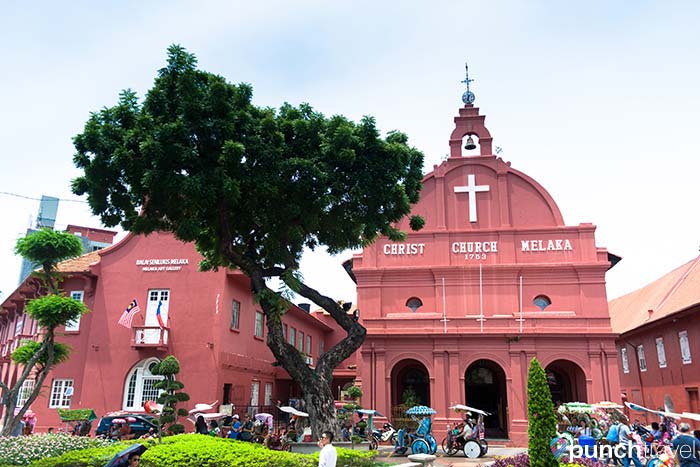
In the center of Red Square is a fountain and another landmark, the Tang Beng Swee Clock Tower. The clock tower was given to the citizens of Malacca by a wealthy benefactor in 1866. Also in the square is Christ Church, a Protestant church built by the Dutch.
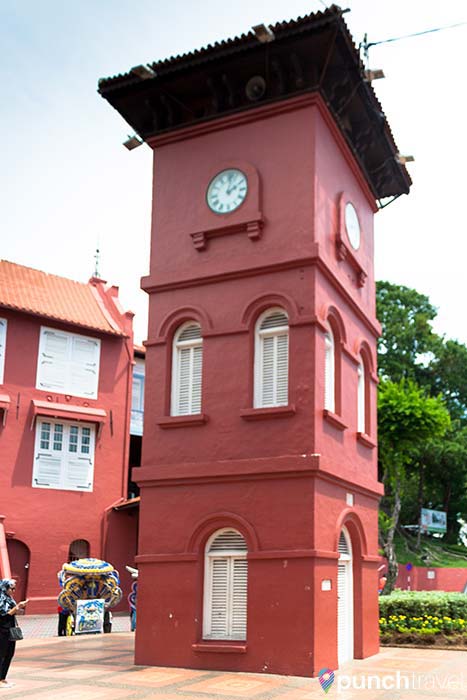
Another thing you can’t miss while at the Red Square is the colorful and gaudy tri-shaws, blasting pop music. You can pick one up in the square and for 40 RM per hour, they’ll take you around to all the sites in Malacca.
The city is easily accessible on foot, so we declined the offer for a ride. The square sits on the banks of the Melaka River, and historical buildings line the waterfront.
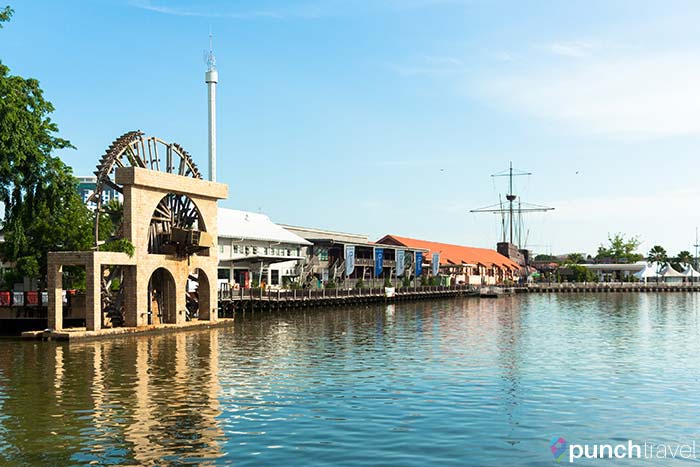
Across from the square is an old fort, with cannons still pointing across the water.
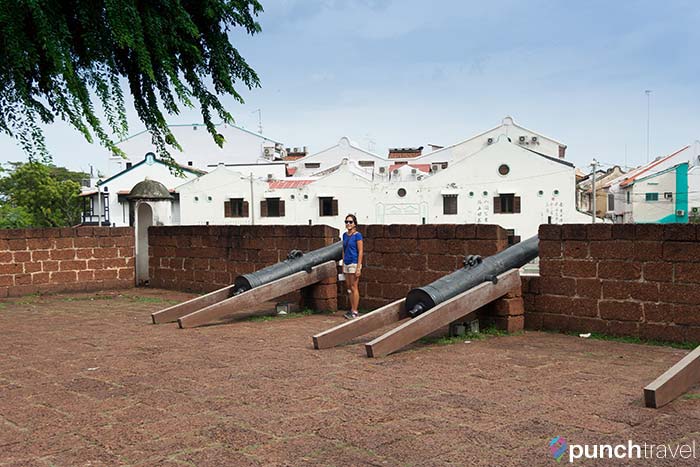
Next to it is a water wheel, a recreation of one used during the time of the Malacca Sultanate.
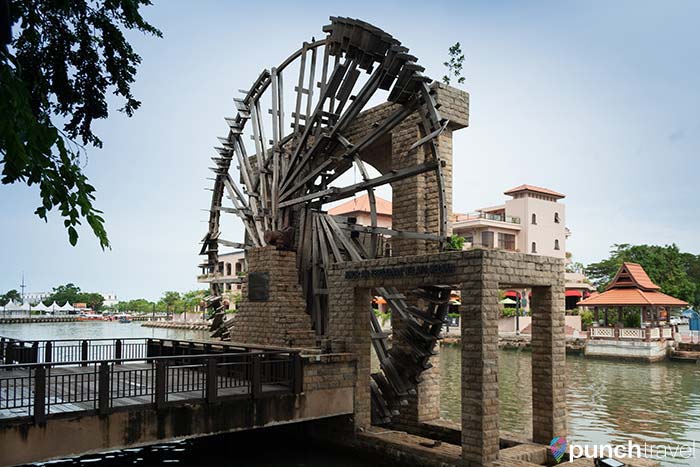
We continued along the banks of the river until we came across something unusual that you can’t miss: a giant pirate ship. It’s a replica of the Portuguese ship, Flor de la Mar, which sank off the coast of Malacca on its way to Portugal. The giant 34-meter high replica houses the Malacca Maritime Museum.
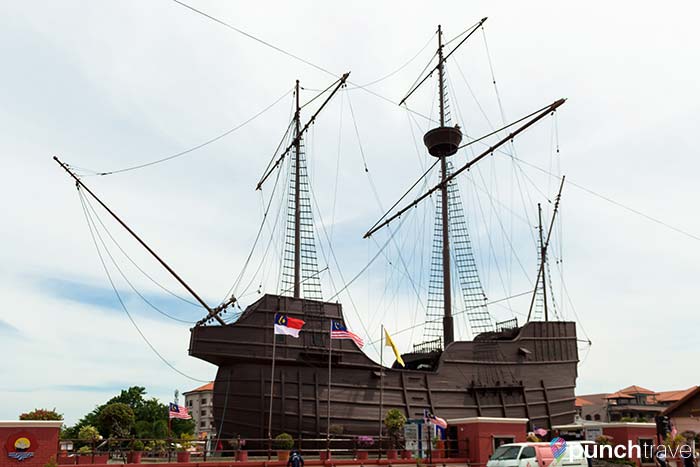
Along the way we popped in to the Museum of Royal Malaysian Customs Department, a free museum about the history of the customs bureau. While the subject may seem a bit random, it was actually quite interesting to see the different items that have been confiscated. And if all else fails, it is a nice respite from the heat.
From there we wandered through a park, Taman Merdeka, which was notable for the old railway car and airplane in the corner. The rail car contains a souvenir shop.
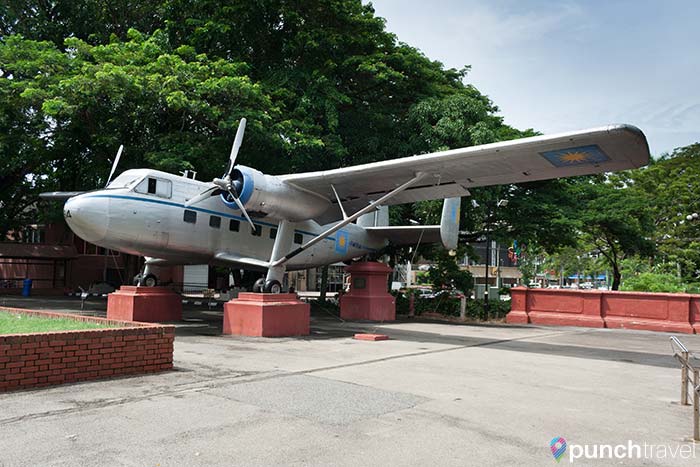
Around the corner from the park is one of the most well-known attractions in Malacca, St. Paul’s Church and A Famosa.
A Famosa was a Portuguese fort built in 1511, and is the oldest remnant of European architecture in Southeast Asia. Much of the fort was later destroyed by the Dutch so all that remains now is the stone gatehouse leading up to the church.
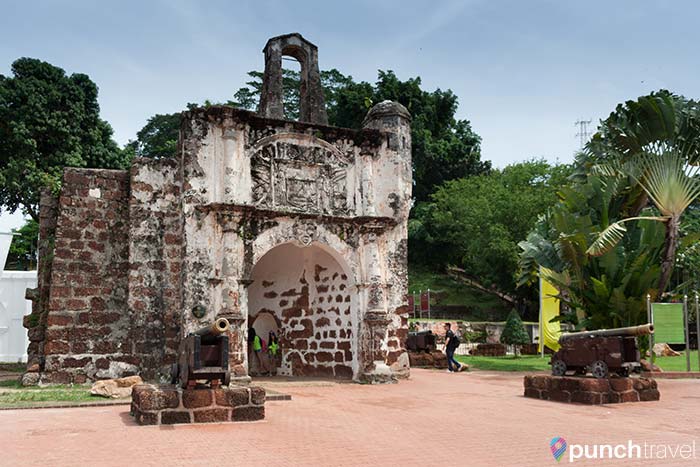
St. Paul’s Church was built by a Portuguese ship captain in 1521. Its location at the top of the hill provides surreal views of the town and the coastline. Unfortunately the touristic Taming Sari Tower sticks out like a sore thumb.
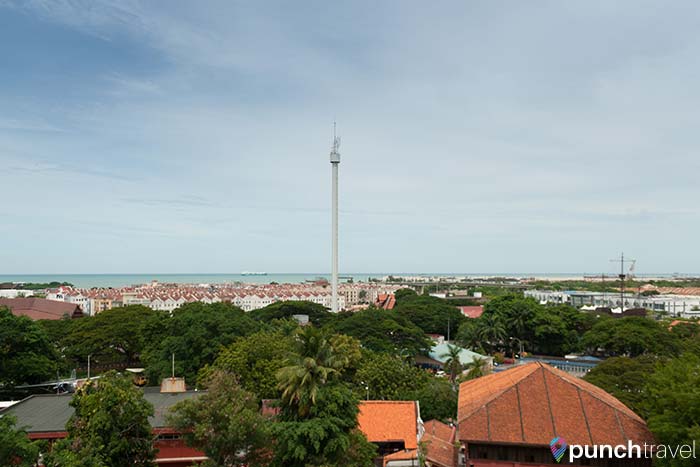
Though only the frame of the church remains, its existence is a testament to the architecture and engineering that allowed the building to survive almost half a millennium. Inside are tombstones from the gravesites that wrap around the hill.
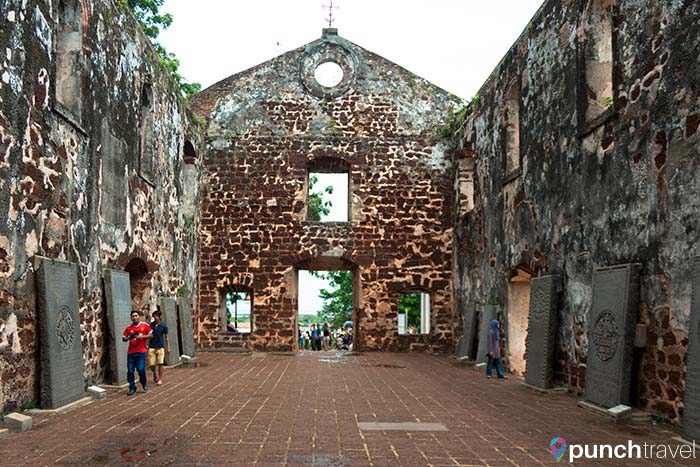
Around this area are a ton of museums. There is the Islamic Museum of Malacca, Stamp Museum, Architecture Museum, People’s Museum, Governor’s Museum and the Malacca Sultanate Palace Museum to name a few.
After lunch in Little India, about a few blocks from Red Square, we crossed over to the other side of the Malacca River.
The Sino-Malaysian Side of Malacca
This side is home to the famous Jonker Street, known for its hawker stalls selling street food and souvenirs. When night falls, the area turns into the bustling Jonker Street Night Market.
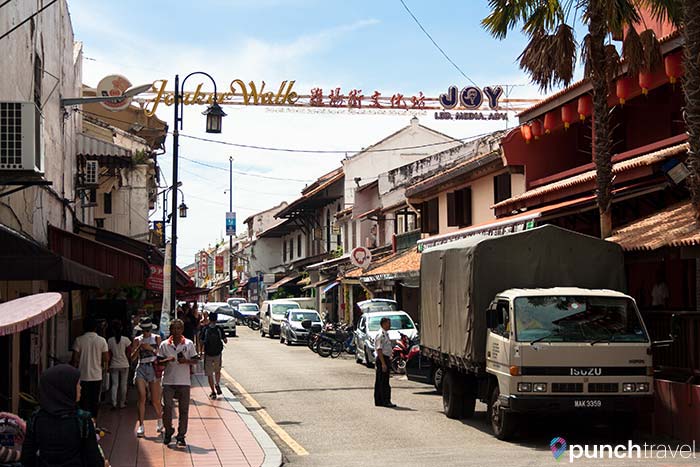
This area reminded me a lot of George Town, the northern city that received the UNESCO World Heritage designation along with Malacca. There was even some street art (but it can’t compare to the street art in George Town).
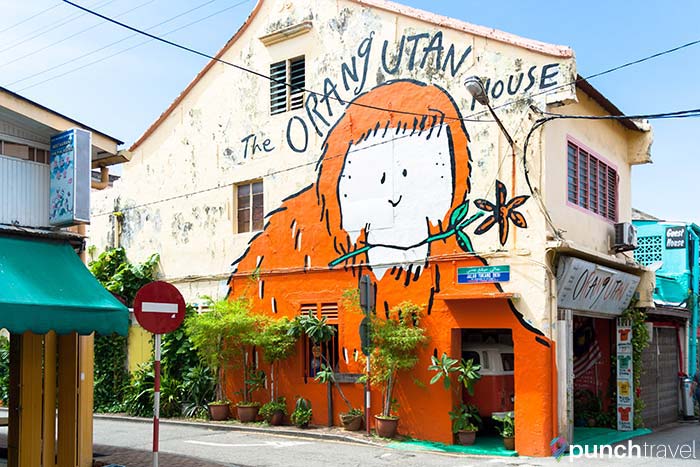
Whereas the other bank of the river was more European-influenced, this side of the river was purely Chinese and Malaysian influenced.

We passed by a few Buddhist temples and mosques.
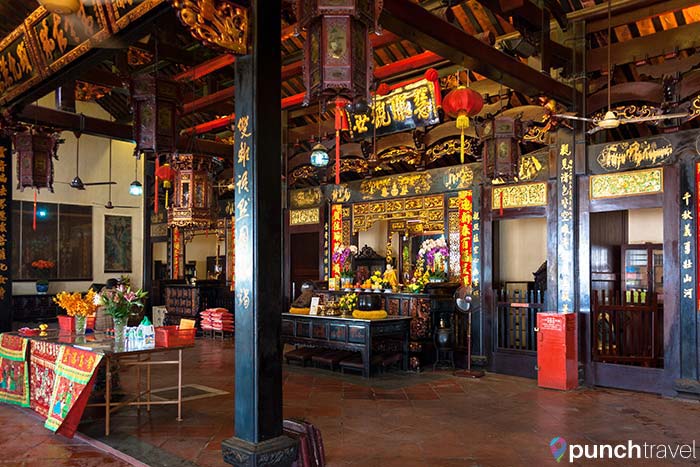
The Peranakan architecture was prevalent throughout this side of Malacca. The distinct shophouses and colonial homes line the streets.
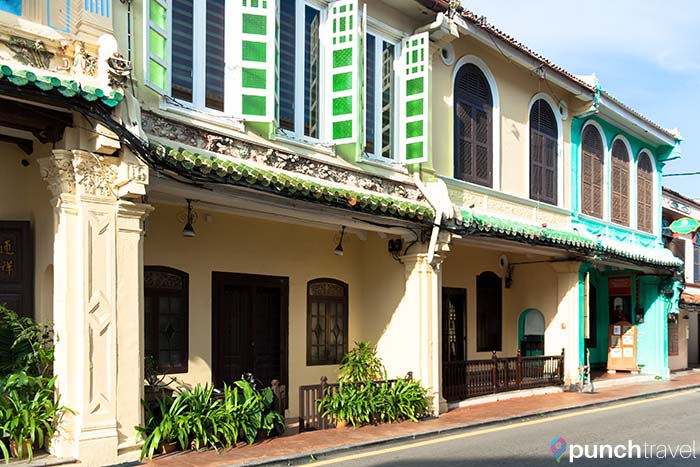
We stumbled across this stately home: the Chee Ancestral Mansion.
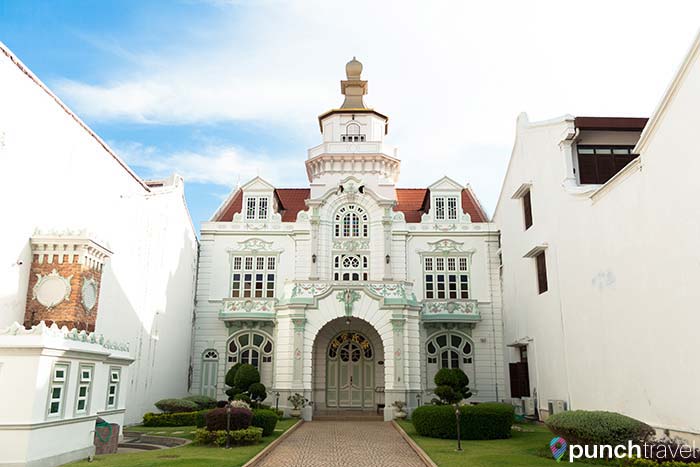
Most of these old mansions are abandoned now, but efforts are underway to restore the homes in order to preserve this unique aspect of Malacca’s history.
Returning to Kuala Lumpur from Malacca
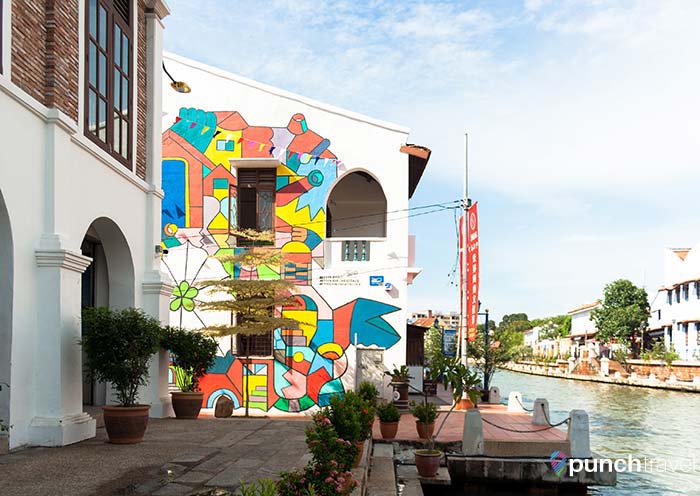
We wrapped up our day trip to Malacca here, and waited for the bus to take us back to Melaka Sentral. As we waited, we watched a family meticulously pile up joss paper (spirit money) in front of their store. The paper imitation-money is burned in reverence to one’s ancestors.
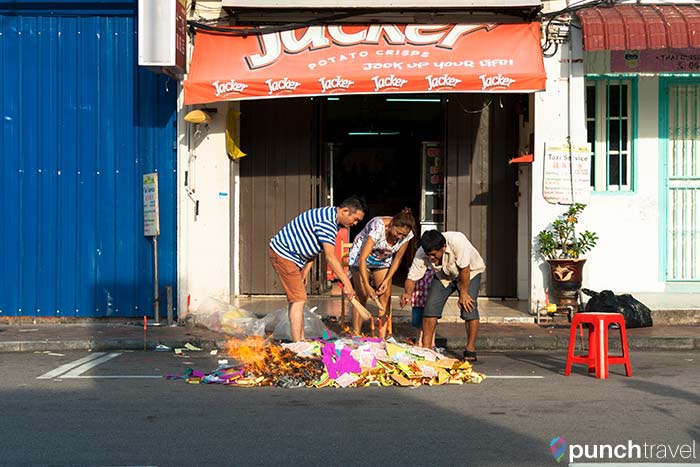
45 minutes later, we were still waiting for the bus. Meanwhile the joss paper had almost burned to ash.
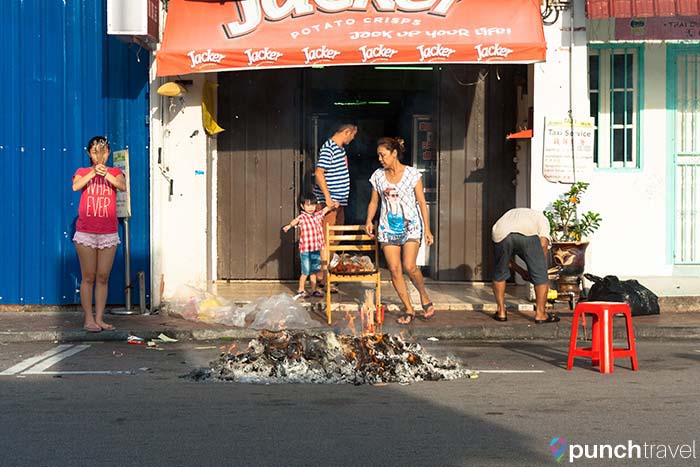
Eventually we gave up on the bus showing and split a cab to the bus terminal with two other passengers for 3 RM each.
With plenty of time to spare, we caught our bus back to Kuala Lumpur without a hitch.
Malacca and George Town – Two UNESCO World Heritage Site Cities
So which city is more worth visiting – Malacca or George Town?
They may share the UNESCO title, each city has something special to offer. George Town is establishing itself for not only its heritage, but also for its burgeoning art scene. Malacca is Malaysia’s oldest city, and its European-influenced past infuses a uniqueness that can’t be found anywhere else in Malaysia.
If you are visiting Kuala Lumpur, a day trip to Malacca is well worth it. Plus with the ease and affordability of taking a bus, you’ll have plenty of time to see all the major sites in one day.
Liked this post? Pin it!
